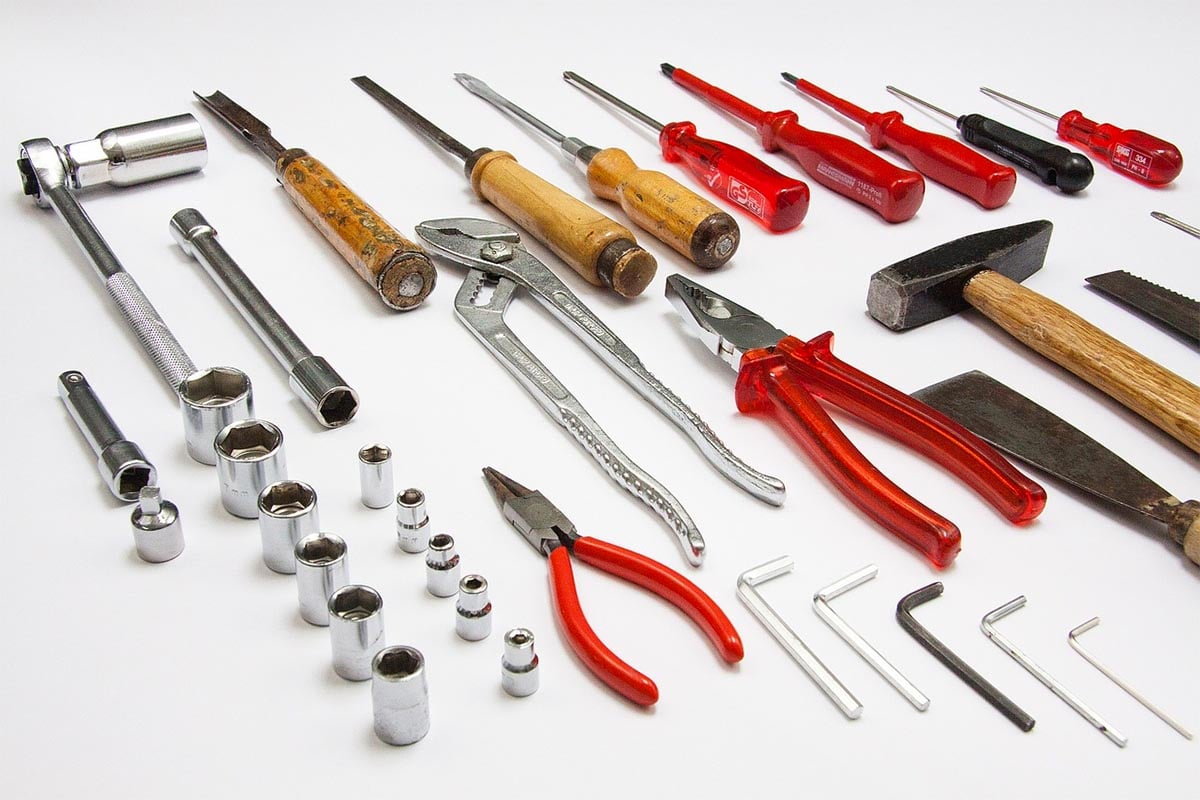

Articles
How Profitable Can A Woodworking Business Be?
Modified: January 5, 2024
Discover the earning potential in woodworking with our informative articles. Explore tips, techniques, and success stories from experienced woodworkers.
(Many of the links in this article redirect to a specific reviewed product. Your purchase of these products through affiliate links helps to generate commission for Storables.com, at no extra cost. Learn more)
Introduction
Woodworking is not just a hobby; it can also be a lucrative business venture. Whether you’re a skilled craftsman or a passionate DIY enthusiast, there is potential to turn your woodworking skills into a profitable income stream. From crafting custom furniture to selling handmade wooden décor, the possibilities are endless.
However, before diving into the world of woodworking as a source of income, it’s important to understand the factors that can affect your earnings. Additionally, knowing the different types of woodworking businesses and the income potential in various niches will help you make informed decisions about your woodworking endeavors.
In this article, we will explore the factors that influence woodworking income, the types of woodworking businesses you can venture into, and the average earnings in the field. We will also delve into the income potential in different woodworking niches, pricing and profit margins, strategies for increasing woodworking income, and the challenges and considerations that come with running a woodworking business.
Let’s embark on this journey and discover just how much you can make from woodworking!
Key Takeaways:
- Woodworking income is influenced by skill level, market demand, pricing strategy, and competition. Craftsmanship, customer relationships, and operational efficiency are crucial for maximizing earnings in this creative business.
- Diversifying products, leveraging online presence, and collaborating with industry professionals are effective strategies for increasing woodworking income. Overcoming challenges such as cost management and seasonal demand is essential for long-term success.
Read more: How To Start A Woodworking Business
Factors Affecting Woodworking Income
While woodworking can be a profitable venture, it’s important to recognize the various factors that can impact your income. Understanding these factors will help you make informed decisions and optimize your earnings in the field.
1. Skill Level: Your level of expertise and craftsmanship plays a significant role in determining your woodworking income. The more skilled and experienced you are, the more valuable your creations will be, allowing you to command higher prices for your products or services.
2. Market Demand: The demand for woodworking products and services in your local area or target market will directly impact your income. Conduct market research to identify the current trends and preferences, and tailor your offerings to meet the demands of your customers.
3. Pricing Strategy: The way you price your products or services will affect your income. Take into account factors such as material cost, labor hours, and overhead expenses when determining your prices. Striking a balance between affordability for customers and profitability for your business is crucial.
4. Marketing and Promotion: Your ability to effectively market and promote your woodworking business can significantly impact your income. Utilize various marketing channels such as social media, online marketplaces, and local events to reach a wider audience and attract potential customers.
5. Quality of Work: The quality of your woodworking projects will directly impact your income. Customers are willing to pay a premium for well-crafted, durable, and aesthetically pleasing products. Focus on delivering high-quality work to build a reputation that attracts repeat customers and referrals.
6. Competition: The level of competition in your woodworking niche can affect your income. Research and analyze your competitors to identify their strengths and weaknesses. Differentiate your offerings by providing unique products or services to stand out in the market.
7. Operational Efficiency: The efficiency of your woodworking operations can have a direct impact on your income. Streamlining processes, reducing waste, and optimizing productivity can improve your profitability. Invest in tools and equipment that enhance efficiency and craftsmanship.
8. Customer Relationships: Building strong relationships with your customers can lead to repeat business and word-of-mouth referrals. Ensure excellent customer service and maintain open communication to foster long-term relationships, which can positively impact your woodworking income.
By considering and optimizing these factors, you can maximize your woodworking income and create a sustainable and profitable business in the field.
Types of Woodworking Businesses
Woodworking encompasses a wide range of creative possibilities, and there are various types of woodworking businesses you can venture into. Here are some common types of woodworking businesses:
- Custom Furniture Making: This type of woodworking business involves creating unique, handcrafted furniture pieces tailored to the specific requirements and preferences of clients. Custom furniture makers often work closely with customers to design and build one-of-a-kind pieces that are both functional and visually appealing.
- Cabinet Making: Cabinet makers specialize in crafting custom cabinets for residential or commercial spaces. From kitchen cabinets to bathroom vanities, they create functional storage solutions that are both practical and aesthetically pleasing.
- Woodworking Workshops: Some woodworkers choose to offer woodworking workshops or classes, where they teach others the art of woodworking. These workshops can cater to beginners looking to learn the basics or more advanced craftsmen seeking to refine their skills.
- Woodworking Restoration: Woodworking restoration businesses focus on breathing new life into old and antique wooden pieces. This can involve repairing, refinishing, or rebuilding antique furniture or architectural elements, preserving their historical value while ensuring their functionality.
- Wooden Toys and Games: Creating and selling wooden toys and games can be a rewarding niche within woodworking. From classic board games to educational toys, the handmade aspect adds a special charm to these products, appealing to parents and collectors alike.
- Wooden Home Decor: Woodworkers can specialize in crafting and selling a wide range of decorative items for the home. This can include items like wall art, sculptures, candle holders, and unique home accents that add warmth and character to any space.
- Woodworking Supplies and Tool Sales: Another avenue within woodworking is selling woodworking supplies and tools. This can include everything from high-quality lumber and woodworking hardware to specialized tools and equipment that fellow woodworkers might need.
These are just a few examples of the types of woodworking businesses you can pursue. Within each category, there are endless opportunities to showcase your creativity and craftsmanship, catering to specific niches or developing a diverse range of woodworking offerings.
Consider your skills, interests, and target market when deciding which type of woodworking business to pursue, and remember, you can always combine multiple types or pivot your focus as your business grows.
Average Earnings in Woodworking
The potential income in woodworking can vary widely depending on several factors, including the type of woodworking business, skill level, market demand, and pricing strategy. It’s important to note that individual earnings can differ greatly based on these factors and individual circumstances. However, understanding the average earnings in woodworking can provide valuable insights.
According to industry reports and research, the average earnings for woodworkers can range from $25,000 to $60,000 per year. This includes both self-employed woodworkers and those working for woodworking companies or furniture manufacturers.
Woodworking business owners, particularly those specializing in custom furniture making or cabinet making, have the potential to earn higher incomes. Many skilled woodworkers who have established a strong reputation and clientele can command premium prices for their unique and high-quality creations.
It’s worth mentioning that the income in woodworking can be seasonal, with certain periods of higher demand and activity. This can affect the overall annual income. Woodworking businesses often experience peak seasons around holidays, where the demand for handmade or personalized gifts and home decor items tends to be higher.
Income potential can also be influenced by geographic location. Woodworking businesses located in areas with a higher cost of living or a vibrant market for handmade and artisanal products may have more opportunities for increased earnings.
It’s important to approach woodworking as a business and not just a hobby. Developing a solid business plan, understanding the costs involved, and setting realistic pricing for your products or services are essential steps toward maximizing your earnings in woodworking.
Ultimately, the income you can generate in woodworking will heavily rely on your dedication, craftsmanship, marketing efforts, and ability to adapt to market trends and customer demands. Building a strong brand, establishing a loyal customer base, and continuously improving your skills can contribute to long-term success and higher earnings in the field.
Keep in mind that these figures are averages and individual earnings can vary significantly. It’s crucial to conduct thorough market research, understand your target audience, and tailor your offerings accordingly to maximize your income potential as a woodworker.
Income Potential in Different Woodworking Niches
The income potential in woodworking can vary depending on the specific niche or specialization that you choose. Let’s explore some different woodworking niches and their income potential:
- Custom Furniture Making: This niche has a high income potential, especially for skilled craftsmen who can create unique and high-quality pieces. Custom furniture makers often have the opportunity to charge premium prices for their customized designs, catering to clients who appreciate the craftsmanship and artistry involved.
- Cabinet Making: Cabinet making can be a lucrative niche, especially if you focus on high-end residential or commercial projects. Creating custom cabinets that are tailored to the specific needs and style preferences of clients can command higher prices. Additionally, offering additional services such as installation and customization can further increase your income potential.
- Woodworking Restoration: While the income potential in woodworking restoration can vary, there is potential to earn a significant income by restoring valuable antique furniture or architectural elements. Collectors and enthusiasts are often willing to pay a premium for the expertise and craftsmanship required to restore these pieces to their former glory.
- Wooden Home Decor: The income potential in creating and selling wooden home decor items can be promising, especially if you focus on unique and eye-catching designs. Establishing an online presence and leveraging platforms like Etsy or local craft shows can help reach a wider audience and increase sales. Offering personalized or custom-made options can also attract higher-paying customers.
- Woodworking Workshops: While the income potential for woodworking workshops might not be as high as other niches, it can provide a consistent stream of income. Charging a fee for each workshop attendee and offering specialized classes or private lessons can help boost your earnings. Additionally, selling woodworking supplies and tools during workshops can generate extra revenue.
- Wooden Toys and Games: Creating and selling handmade wooden toys and games can be a profitable niche, especially if you tap into the eco-friendly and sustainable market. Unique and well-crafted wooden toys can command higher prices, attracting parents and collectors who appreciate the quality and durability of these toys.
It’s important to choose a woodworking niche that aligns with your skills, interests, and market demand. By focusing on a specific niche, you can develop expertise and cater to a targeted audience, improving your chances of success and higher income potential.
It’s worth noting that income potential can also be influenced by your marketing efforts, pricing strategy, and operational efficiency. Continuously refining your skills, staying updated with current trends, and offering exceptional customer service can contribute to increasing your income potential in any woodworking niche.
Keep in mind that success in any niche requires dedication, continuous learning, and adapting to the ever-changing market demands. By capitalizing on your strengths and finding your unique selling point, you can maximize your income potential as a woodworker.
Focus on creating high-quality, unique woodworking pieces that cater to a specific niche or market. Building a strong brand and marketing your products effectively can significantly increase your earning potential.
Pricing and Profit Margins
Pricing your woodworking products or services correctly is crucial for maximizing your income and ensuring profitability in your woodworking business. Here are some factors to consider when determining the pricing and profit margins:
Cost of Materials: Calculate the cost of materials used to create your woodworking products. This includes the cost of lumber, hardware, finishes, and any other supplies required. Keep track of the prices and shop around to ensure you’re getting the best deals on materials without compromising quality.
Labor and Time: Consider the time and effort it takes to complete each woodworking project. Calculate the total number of hours spent, including design, sourcing materials, preparation, actual construction, and finishing touches. Factor in labor costs based on the hourly rate you wish to earn.
Overhead Expenses: Include all the overhead expenses associated with running your woodworking business. This can include workspace rent, utilities, insurance, equipment maintenance, marketing expenses, and software or administrative costs. Distribute these expenses across your products or services to ensure they are accounted for in your pricing.
Market Demand and Competition: Analyze the market demand and competition in your niche. Research what similar products or services are priced at to gain a sense of the market expectations and pricing benchmarks. Consider the unique value you bring to the market and adjust your pricing accordingly to position yourself competitively.
Profit Margin: Determine the profit margin you want to achieve for your woodworking business. This is the amount by which you want to exceed your expenses and generate profit. Profit margin can vary depending on the woodworking niche, but a general rule of thumb is to aim for a profit margin of at least 20-30% to ensure sustainability and growth.
Value Perception: Consider the perceived value of your woodworking products or services. Emphasize the craftsmanship, quality materials, unique designs, and any added value you provide to customers. The perceived value can justify higher pricing and increase customer willingness to pay for your offerings.
Testing and Adjusting: It’s essential to test your pricing strategy and evaluate its effectiveness. Monitor sales, customer feedback, and profit margins regularly. If you find that your current pricing is not yielding the desired income or profit margins, be willing to adjust and fine-tune your pricing strategy accordingly.
Remember, pricing is not a one-size-fits-all approach. It requires continuous evaluation and adjustment based on factors such as market trends, material costs, and customer demand. Finding the right balance between affordability for customers and profitability for your business is key to long-term success in woodworking.
By carefully considering these factors and regularly reassessing your pricing, you can ensure that your woodworking business is generating the necessary income and profit to support its growth and sustainability.
Strategies for Increasing Woodworking Income
If you’re looking to increase your woodworking income, there are several strategies you can implement to boost your earnings. Here are some effective strategies to consider:
1. Expand Your Product Range: Diversify your woodworking offerings by expanding your product range. Consider adding complementary products or services that align with your existing niche. For example, if you specialize in custom furniture, you could also offer furniture restoration or design consultations to cater to a wider audience and generate additional income streams.
2. Upsell and Cross-sell: Implement upselling and cross-selling techniques to maximize each customer transaction. Offer additional services or complementary products to customers who have already shown interest. For example, if a customer is purchasing a custom-made dining table, you can offer to create matching chairs or other related furniture pieces.
3. Develop a Strong Online Presence: Build a professional website and establish a strong presence on social media platforms and online marketplaces. Utilize high-quality product photography, engaging descriptions, and customer testimonials to showcase your woodworking expertise. Utilize search engine optimization techniques to improve your visibility and attract potential customers.
4. Participate in Local Events and Craft Shows: Take part in local craft fairs, trade shows, and community events to showcase your products and connect with potential customers. These events provide an opportunity to directly engage with customers and build brand awareness. Offer special promotions or exclusive discounts to incentivize sales during these events.
5. Collaborate with Interior Designers and Contractors: Establish partnerships with interior designers, home builders, and contractors in your area. Offer your woodworking services as a valued resource or subcontractor for their projects. This collaboration can lead to increased exposure, high-value projects, and referrals from industry professionals.
6. Implement Effective Marketing Strategies: Develop a comprehensive marketing plan that includes both online and offline strategies. Utilize social media advertising, targeted online campaigns, email marketing, and local print advertising to reach your target audience. Highlight your unique selling points, such as craftsmanship, customization options, or eco-friendly practices, to differentiate yourself from competitors.
7. Offer Workshops or Classes: Consider offering woodworking workshops or classes to share your expertise and generate additional income. You can teach basic woodworking skills or focus on specialized techniques. These workshops can attract hobbyists and aspiring woodworkers while promoting your business and potentially leading to future sales.
8. Focus on Customer Service: Prioritize exceptional customer service to build strong relationships and foster customer loyalty. Respond promptly to inquiries, provide personalized recommendations, and ensure a smooth and enjoyable purchasing experience. Satisfied customers are more likely to become repeat customers and refer others to your woodworking business.
By implementing these strategies, you can increase your woodworking income and create opportunities for sustained growth in your business. Continuously adapt and refine your approach based on customer feedback, industry trends, and market demands to stay competitive and maximize your earnings in the woodworking industry.
Challenges and Considerations in Woodworking Business
While woodworking can be a fulfilling and profitable business, there are also challenges and considerations to be aware of. Understanding and navigating these challenges will help you set realistic expectations and make informed decisions for your woodworking business. Here are some key considerations:
1. Cost of Materials and Equipment: Woodworking requires a significant investment in materials, tools, and equipment. High-quality lumber, specialty hardware, and reliable machinery can be costly. Properly budgeting and managing these expenses is essential to maintain profitability.
2. Time and Skill Development: Woodworking is a skill that takes time to develop. Enhancing your craftsmanship and skills requires practice, patience, and a willingness to learn from mistakes. Be prepared to invest time and effort to continuously improve your woodworking abilities.
3. Market Competition: Woodworking is a competitive industry, and there may be other skilled artisans or businesses offering similar products or services. It’s important to differentiate yourself by offering unique designs, exceptional craftsmanship, or specialized services to stand out from the competition.
4. Seasonal Demand: Woodworking income can fluctuate seasonally, with certain periods experiencing higher demand than others. For example, the holiday season may see increased sales, while other times of the year may be slower. Managing your finances and planning for seasonal fluctuations is crucial for a sustainable business.
5. Customer Preferences and Trends: Staying updated with evolving customer preferences and industry trends is vital. Keep an eye on design trends, popular materials, and consumer demands to ensure that your woodworking offerings remain relevant and appealing to your target market.
6. Reputation and Brand Building: Building a strong reputation and brand is essential for long-term success in woodworking. Positive customer experiences, quality craftsmanship, and a consistent brand identity contribute to a solid reputation. It takes time and effort to establish credibility and trust within the industry.
7. Health and Safety: Woodworking involves working with power tools, machinery, and potentially hazardous materials. Prioritize safety by following proper protocols, using protective gear, and maintaining a clean and organized workspace. Invest in safety training and stay updated with safety guidelines to mitigate risks.
8. Pricing and Profitability: Determining the appropriate pricing for your products or services while maintaining profitability can be challenging. Consider factors such as material costs, labor, overhead expenses, and market demand. Regularly review and adjust your pricing strategy to ensure it aligns with your business goals.
9. Time Management and Workflow: Balancing multiple projects and effectively managing your time is crucial in woodworking. Develop efficient workflows, establish deadlines, and communicate expectations with clients to ensure smooth project management. Plan and prioritize your tasks to optimize productivity and meet customer expectations.
10. Adaptability and Continuous Learning: The woodworking industry is constantly evolving, and it’s important to stay adaptable and open to learning new techniques, technologies, and trends. Embrace innovation and seek opportunities to expand and diversify your woodworking skills and offerings.
Understanding and considering these challenges will help you navigate the woodworking business landscape more effectively. Adaptability, continuous improvement, and a customer-centric approach will be key to overcoming challenges and building a successful woodworking business.
Conclusion
Woodworking has the potential to be both a fulfilling craft and a profitable business venture. By understanding the factors that can affect your woodworking income, exploring different woodworking niches, and implementing effective strategies, you can increase your chances of success and financial growth in the field.
Factors such as skill level, market demand, pricing strategy, and competition all play a role in determining your woodworking income. By continuously improving your craftsmanship, staying attuned to market trends, and providing exceptional customer service, you can position yourself as a reputable and sought-after woodworker.
Custom furniture making, cabinet making, woodworking workshops, wooden home decor, woodworking restoration, wooden toys and games, and woodworking supplies are just a few examples of the different niches you can explore within woodworking. Each niche offers its own income potential and allows you to showcase your unique skills and creativity.
Pricing your woodworking products or services requires careful consideration and an understanding of factors such as material cost, labor, overhead expenses, and profit margin. By striking the right balance between affordability for customers and profitability for your business, you can ensure long-term sustainability and growth.
While there are challenges in the woodworking business, such as cost management, market competition, and seasonal demand, proper planning, continuous learning, and adaptability can help you overcome these obstacles. Building a strong reputation, establishing a solid brand, and prioritizing customer satisfaction are key to thriving in the industry.
In conclusion, woodworking offers a unique blend of creativity, craftsmanship, and business potential. By combining your passion for woodworking with effective strategies, market research, and a customer-centric approach, you can unlock the full income potential of your woodworking business. Embrace the challenges, continue to refine your skills, and carve out a successful and fulfilling career in woodworking.
Frequently Asked Questions about How Profitable Can A Woodworking Business Be?
Was this page helpful?
At Storables.com, we guarantee accurate and reliable information. Our content, validated by Expert Board Contributors, is crafted following stringent Editorial Policies. We're committed to providing you with well-researched, expert-backed insights for all your informational needs.















0 thoughts on “How Profitable Can A Woodworking Business Be?”